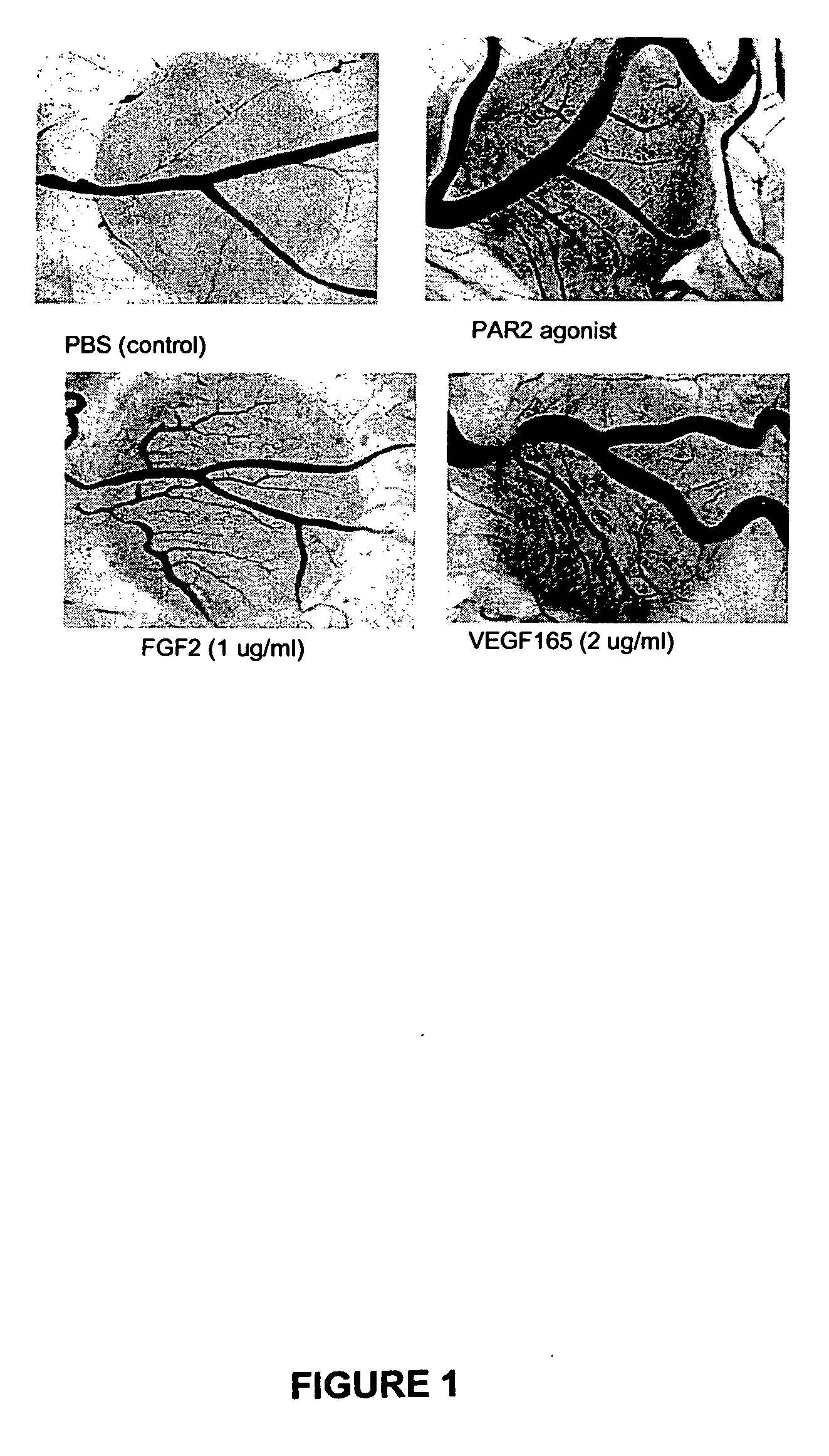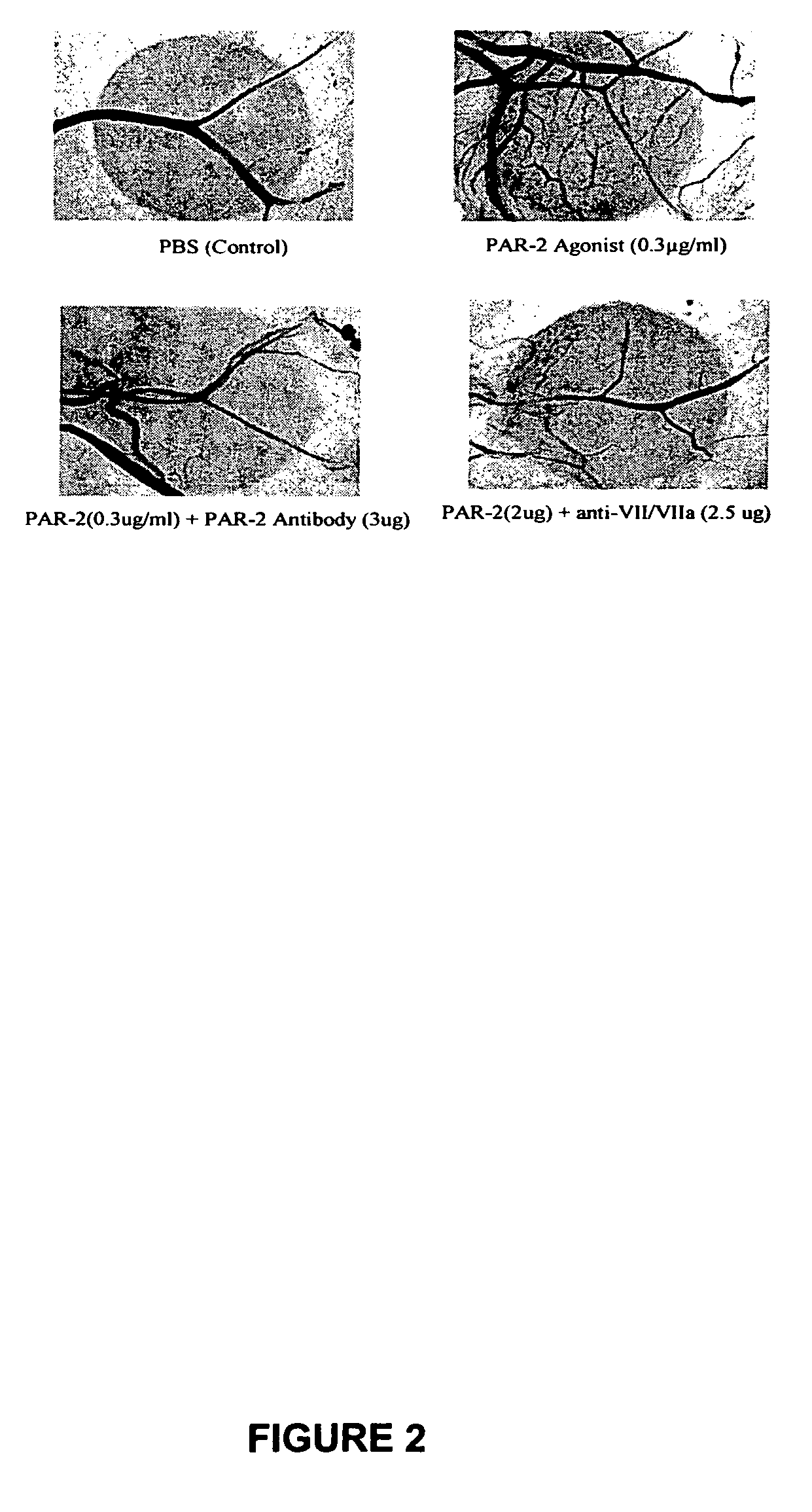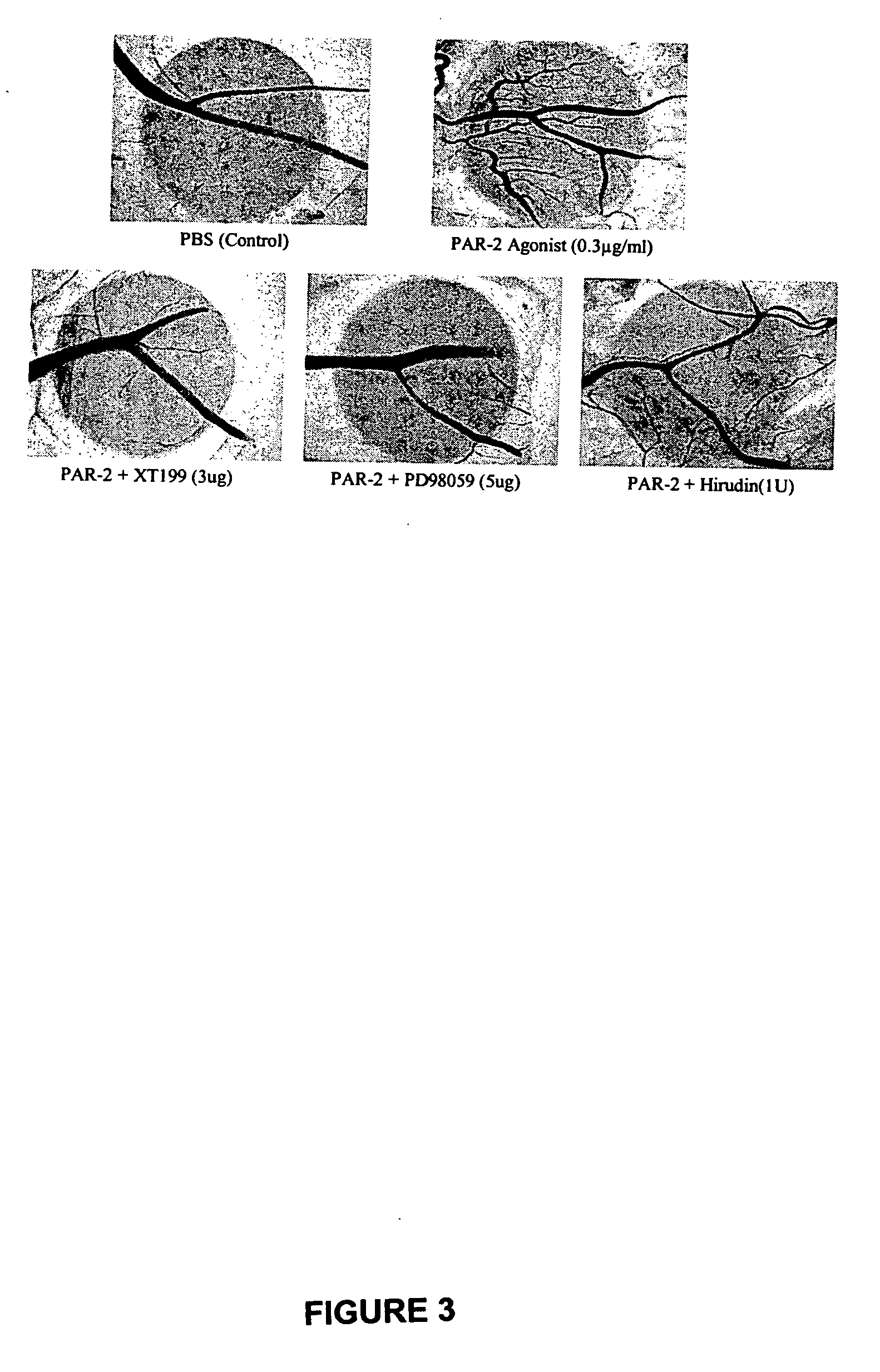Activators and inhibitors of protease activated receptor2 (PAR2) and methods of use
a protease activated receptor and inhibitor technology, applied in the field of protease activated receptor 2 (par2) agonists, can solve the problems of many unanswered questions, achieve the effects of reducing leukocyte rolling velocity, increasing vascular permeability, and inducing inflammatory responses
- Summary
- Abstract
- Description
- Claims
- Application Information
AI Technical Summary
Benefits of technology
Problems solved by technology
Method used
Image
Examples
example 1
Materials
[0081] All reagents were chemical grade and purchased from Sigma Chemical Co. (St. Louis, Mo.) or through VWR Scientific (Bridgeport, N.J.). Cortisone acetate, bovine serum albumin (BSA), and gelatin solution (2% type B from bovine skin) were purchased from Sigma Chemical Co. (St. Louis, Mo.). M199 growth medium with Earl's salts, basic FGF, Insulin-Transferrin-Selenium-G Supplement (I-T-Se) 100×, Dulbecco's phosphate buffered salt solution (PBS) with and without Ca+2 and Mg+2, and 0.5 M EDTA were obtained from Gibco BRL (Grand Island, NY). Human umbilical vein endothelial cells (HUVEC), endothelial cell basal medium (serum-free, EBM), endothelial growth medium (EGM) (supplemented with growth factors, fetal calf serum), and 0.025% trypsin / 0.01% EDTA solution were purchased from Clonetics Inc. (San Diego, Calif.). Human prostrate (TSU-Pr) tumor cells were obtained from American Type Culture Collection (Rockville, Md.). Matrigel® matrix and human collagen type III were purc...
example 2
Inhibition of Endothelial Cell Tube Formation
[0083] Differentiation by endothelial cells was examined using a method developed by Grant et al. (Grant et al., In Vitro Cell Dev. Biol., 27A:327-336 (1991), which is hereby incorporated by reference in its entirety). Matrigel® matrix, phenol-red free (commercially available from Becton Dickinson, Bedford, Mass.) was thawed overnight at 4° C. Using cold pipette tips, 3.0 mg / well of Matrigel® matrix was placed in a cold twenty-four-multiwell plate (Falcon). Matrigel® matrix was allowed to polymerize during incubation at 37° C. for 30 minutes.
[0084] Human umbilical vein endothelial cells (HUVEC) were maintained at 37° C. with 5% CO2 and 95% humidity in endothelial cell growth medium with 2% fetal bovine serum (EGM). The tube assay was performed in endothelial cell basal medium (EBM) supplemented with 0.5% bovine serum albumin (BSA) and 1:100 diluted Insulin-Transferrin-Selenium-G supplement (I-T-Se, 100×). HUVEC were trypsinized, centrif...
example 3
In Vitro 3D Sprout Angiogenesis of Human Microvascular Endothelial Cells
[0086] Culture of HDMEC on micro-carrier beads: 80% confluent HDMEC (Passage 5-10) were mixed with gelatin-coated Cytodex-3 beads with a ratio of 40 cells per bead. Suspend cells and beads (150-200 beads per well for 24-well plate) with 5 ml EBM+15% normal human serum, mix gently every one hour for first four hours, then leave the mixture culture in CO2 incubator overnight. The next morning, add 10 ml of fresh EBM+15% HS and culture for another three hours. Before experiments, check the culture of EC-beads. Add 500 μl of PBS in a well of 24-well plate, take 100 ul of the EC-bead culture solution, and add it to the PBS, observe and count the number of beads, calculate the concentration of EC-beads. The EC-beads are good for experiments for 48 hours.
[0087] Prepare fibrinogen solution (1 mg / ml) in EBM medium with or without angiogenesis factors or testing factors. For positive control, use 30 ng / ml VEGF+25 ng / ml ...
PUM
| Property | Measurement | Unit |
|---|---|---|
| Molecular weight | aaaaa | aaaaa |
| Permeability | aaaaa | aaaaa |
| Pharmaceutically acceptable | aaaaa | aaaaa |
Abstract
Description
Claims
Application Information
 Login to View More
Login to View More - R&D
- Intellectual Property
- Life Sciences
- Materials
- Tech Scout
- Unparalleled Data Quality
- Higher Quality Content
- 60% Fewer Hallucinations
Browse by: Latest US Patents, China's latest patents, Technical Efficacy Thesaurus, Application Domain, Technology Topic, Popular Technical Reports.
© 2025 PatSnap. All rights reserved.Legal|Privacy policy|Modern Slavery Act Transparency Statement|Sitemap|About US| Contact US: help@patsnap.com



